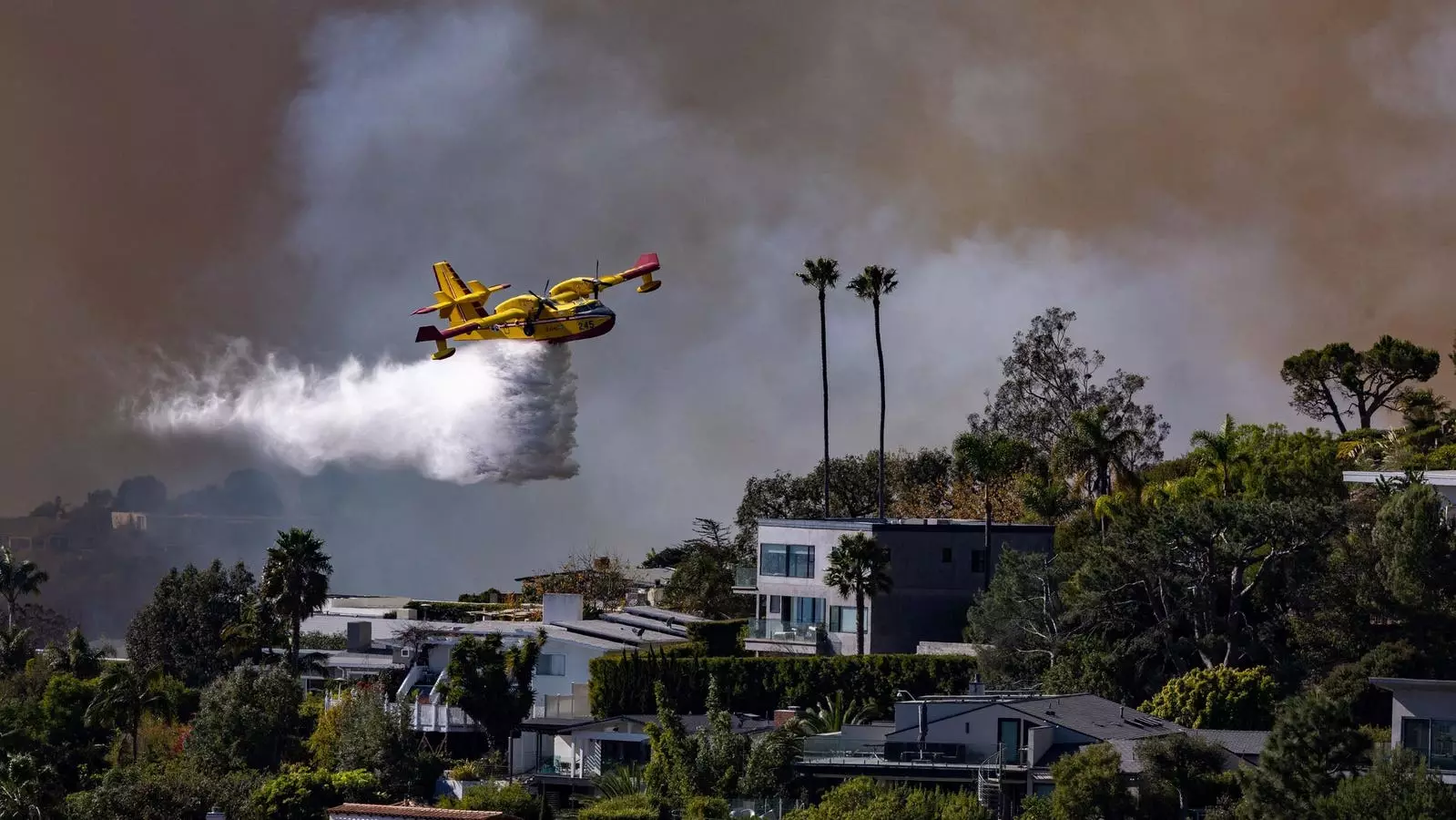The recent wildfires raging through Los Angeles have incited a wave of discussions surrounding the responsibility for California’s water shortages, particularly implicating influential figures like Stewart and Lynda Resnick of the Wonderful Company. While this narrative has gained traction across social media platforms, it’s crucial to dissect the veracity behind these claims. Many assume that a lack of water resources is the primary cause of the wildfires, leading to misinformed discussions about fire hydrant failures and emergency services unable to function effectively.
However, research indicates that the actual reservoirs in Los Angeles are adequately stocked with water. The problem lies not in a lack of resources but in the aging infrastructure that fails when challenged by wildfires of unprecedented scale. The focus should not merely be on who holds power in water politics, but rather on the systemic issues within the water management and firefighting frameworks.
The infrastructure supporting LA’s emergency water network is under immense scrutiny. Experts highlight that while there is considerable attention on climate change mitigation—such as reducing greenhouse gas emissions—there is a notable deficit in efforts aimed at adapting to climate change consequences. Organizations like the Natural Resources Defense Council have emphasized the need for better water security and improved strategies for wildfire combat.
Dr. Mark Gold, a leading voice on environmental issues, emphasizes that we are experiencing “climate whiplash”—a term that encapsulates the rapidly changing climate conditions impacting California’s ecosystem. With wildfires becoming a recurring phenomenon, the existing emergency services system is not equipped to handle these unpredictable challenges effectively. The reality is that resilience planning is essential for the future, as climate change continues to alter our environmental fabric.
In the context of corporate responsibility, the Wonderful Company’s recent pledge of $10 million towards fire relief efforts—including significant contributions to both the Los Angeles Fire Department Foundation and the LAPD Foundation—raises questions about the impact such donations have on addressing systemic issues. While these funds are undoubtedly beneficial in mitigating immediate fire impacts, they do not resolve the underlying infrastructure failings.
The real crisis transcends financial support; it demands a reevaluation of how corporations like the Wonderful Company influence California’s water policies. Their actions exhibit a duality–while their philanthropic endeavors provide temporary relief, their significant presence in water management puts them under the lens of accountability for long-term systemic change.
Moreover, the ramifications of wildfires extend beyond environmental destruction; they have profound implications for public health and safety. The United States Department of Agriculture has warned that wildfires can compromise the safety of food resources, making it an urgent public health issue. As residents flee and utilize resources to escape danger, the concern over food safety in unstable environments becomes increasingly pressing.
As California grapples with these multifaceted challenges, it’s crucial for policymakers, corporations, and the public to engage in constructive dialogue about better resource management. This includes practical adaptations to our current systems and infrastructures that can withstand the impacts of such drastic climate changes and prevent the exacerbation of future crises.
As we witness the destruction wrought by California’s wildfires, a deeper understanding of the issues at hand becomes pivotal. It’s not enough to place blame or to merely react to crises with temporary relief; a fundamental shift towards long-term resilience and adaptive strategies is essential. This includes investing in infrastructure improvements, enhancing water security, and ensuring that communities are equipped to handle the realities of climate change.
Ultimately, the discussion must evolve from a focus on culpability to one of comprehensive solutions, fostering a sustainable future that protects both people and the environment. By emphasizing adaptation alongside mitigation, California has the potential to transform its approach to not only wildfires but all challenges posed by an increasingly volatile climate.

